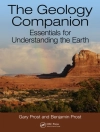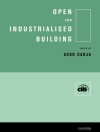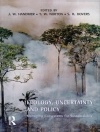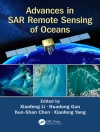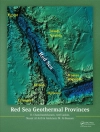This innovative book tackles the pressing global environmental issue of microplastic pollution, with a particular focus on the diverse and ecologically significant regions of Africa and Asia. Through comprehensive analysis, it unveils the alarming extent of microplastic contamination in these regions, highlighting the urgent need for attention and action. The book provides a thorough introduction to microplastics, exploring their composition, formation process, and mechanisms of infiltration into terrestrial and aquatic ecosystems. It explains their transport mechanisms, their presence in air, water, soil, sediments, wetlands, and their far-reaching ecological impacts on food security and human health. It investigates their direct and indirect effects on public health, including inhalation, ingestion, toxicological implications, and overall consequences. The book also examines the interactions between human activities, socioeconomic factors, and microplastic proliferation across different environmental compartments. Drawing insights from case studies across coastal cities and remote rural areas, the book illustrates the scope and magnitude of this problem in Africa and Asia. Furthermore, it provides an overview of analytical techniques and methodologies employed in microplastic research, such as GIS, remote sensing, spectroscopy, and computational modelling. It meticulously analyzes current mitigation techniques, best practices, policy frameworks, and the role of public awareness in addressing this issue. The book offers insights into future research directions, mitigation strategies, and broader ecological and human health aspects of microplastic pollution. Designed as a graduate-level resource, this interdisciplinary book is invaluable for researchers across disciplines, policymakers working in these regions, and anyone concerned about the pervasive issue of microplastic pollution and its far-reaching consequences across several other regions of the world.
Tabla de materias
1. Overview of microplastics and their environmental occurrences.- 2. Understanding microplastics as environmental threats.- 3. Geographic/environmental distribution of microplastics.- 4. Transport mechanisms of microplastics in the environment.- 5. Monitoring and assessment techniques for microplastics.- 6. Microplastic pollution in the changing climate.- 7. Microplastics in air/atmosphere.- 8. Microplastics in surface water and groundwater.- 9. Microplastics in soils and sediments.- 10. Microplastics in plant species.
Sobre el autor
Johnbosco C. EGBUERI holds a B.Sc. Degree (First Class Honours) in Geology from Anambra State University (now Chukwuemeka Odumegwu Ojukwu University (COOU)), Nigeria. He obtained his M.Sc. and Ph.D. in Geology from the University of Nigeria, Nsukka. Additionally, he has professional certifications in Health, Safety & Environment (HSE), Project Management, and Risk Assessment. Currently, Johnbosco is an academic staff member of the Department of Geology at COOU, an Associate Director of the Research Management Office (RMO) at COOU, a Research Fellow at INTI International University, Malaysia, and an Adjunct Professor at Vellore Institute of Technology, India. Since 2021, he has been listed as one of the World’s Top 2% Scientists by Stanford University, USA, demonstrating his competence in conducting impactful research. His research interests lie within the scope of Applied Geosciences, including Engineering Geology, Hydrogeology, Environmental Geology, Medical Geology, and related fields. He has successfully engaged in and completed several research projects, publishing numerous research articles in reputable peer-reviewed and top-ranking international journals indexed in Scopus and Web of Science databases. Furthermore, he has authored, co-authored, and co-edited several chapters and books in his field. Johnbosco has served and continues to serve as a Reviewer, Editorial Board Member, and Editor for several peer-reviewed international journals and book series within his research areas, contributing to the advancement of knowledge in his field.
Joshua O. IGHALO obtained his Bachelor’s Degree in Chemical Engineering in 2015 from the University of Benin, Nigeria. He also received a Master’s Degree in Chemical Engineering in 2020 from the University of Ilorin, Nigeria. He is an academic staff of the Department of Chemical Engineering, Nnamdi Azikiwe University, Nigeria. At these institutions, his research areas were water treatment and solid waste management. He is currently a Ph D student in the Department of Chemical Engineering, Kansas State University, USA. He now does research in nanotechnology for cleaner energy and environmental pollution remediation. He is a registered engineer by the Council for the Regulation of Engineering in Nigeria (COREN). He is also a member of the American Institute of Chemical Engineers (AICh E). He has authored or co-authored over 200 peer-reviewed papers in Scopus-indexed journals, over 20 chapters in edited books, and has published 2 edited books (with Elsevier B.V. and Springer Nature). He currently serves as an academic editor for Advances in Materials Science and Engineering, Wiley Online Library.
Chaitanya B. PANDE completed his Ph.D. in Environmental Science from Sant Gadge Baba Amravati University, Amravati, and M.Sc. in Geo-informatics from Amravati University in 2011. He is a Research Fellow at the International University. His research interests include remote sensing, GIS, Google Earth Engine, machine learning, watershed management, hydrogeology, hydrological modelling, drought monitoring, land use and land cover analysis, groundwater quality, urban planning, hydrogeochemistry, groundwater modelling, geology, hyperspectral remote sensing, GIS application in natural resources management, watershed management, and environmental monitoring and assessment subjects. He has more than 12 years of teaching, research, and industrial experience. So far, he has published above 120+ international and national research papers, 3 textbooks, 15+ edited books, 19 conference papers, and 30 book chapters in Scopus database with more than 3351 citations. He also acts as a reviewer for several scientific international journals and editorial board member in American Journal of Agricultural and Biological Sciences.



